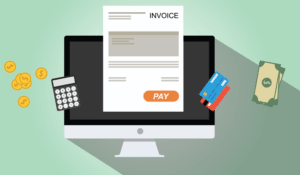Capital Expenditure Capex
4 Best Ways To Buy Bitcoin Cash Bch Instantly In 2021
20 de junho de 201920+ Comptia Security+ Plus Courses
31 de outubro de 2019Content

They are long-term in nature and are generally used to acquire things like property, equipment, and technology. If, however, the expense is one that maintains the asset at its current condition, such as a repair, the cost is typically deducted fully in the year the expense is incurred.
Capital expenditure expressed as a percentage of direct expenditure in public educational institutions (instructional and non-instructional) of the specified level of education. Financial aid to students and other transfers are excluded from direct expenditure. Capital expenditure is for education goods or assets that yield benefits for a period of more than one year. It includes expenditure for construction, renovation and major repairs of buildings and the purchase of heavy equipment or vehicles. A CAPEX is different from an everyday expense, often referred to as an operating expense, or OPEX, such as the purchase of advertising or toner cartridges. The major differences are that a CAPEX is a one-time cash outlay, not recurring, and it impacts a long-term asset, or something that can’t be deducted in full in the year in which it was bought.
What Is A Capital Expenditure Capex?
Because a capital expenditure is considered an investment in a given company, it should be recorded as an asset on the company’s balance sheet. It should then be deducted over the course of multiple years as a depreciation expense starting in the year following the year of purchase. As a business owner, you incur costs as a regular part of your company’s daily operations.
- CapEx can tell you how much a company is investing in existing and new fixed assets to maintain or grow the business.
- Attach a detailed estimate that breaks down the individual project costs such as construction, furniture, equipment, contingency.
- The key difference between capital expenditures and operating expenses is that operating expenses recur on a regular and predictable basis, such as in the case of rent, wages, and utility costs.
- But a company can sometimes choose whether an expense will be an operating or capital expense, for example, whether a needed asset is leased or bought.
First, calculate your cash-flow-to-capital-expenditure ratio by dividing your total incoming business cash flow by your capital expenditures. If your ratio is greater than one — in other words, if you have more cash coming in than going out to capital expenditures — then your business is earning enough to cover the expected investments on sales alone. A ratio below one indicates aggressive capital expenditure spending — and might mean that you’ll need to borrow money or raise capital to cover it. To get Net Book Value of fixed assets you would just look at the balance sheet which shows total fixed assets less accumulated depreciation to arrive at net fixed assets or net book value. The income statement would show the depreciation expense recognized for the year. In contrast, OpEx and revenue expenditures are expenses required to operate a business. OpEx purchases will be used in the accounting period in which they are incurred.
Costs that a company incurs as part of its regular course of business are known as operational expenditures and should be treated differently from capital expenditures. Operational expenditures are not depreciated and must be recorded as expenses for the year in which they are incurred. Capital expenditures are recorded as an asset on a company’s balance sheet.
Financial Services
Capex is a major purchase that will be used over time, rather than consumed in the year it was purchased. Businesses are careful with the distinction between Capex and Opex because of the tax implications. Opex can be written off entirely in the year it is incurred, but Capex must be depreciated and amortized over a period of several years. Because these costs take a long time to recover, most companies budget for Capex purchases separately from their Opex budget. Exactly how much you should invest in capital expenditures hinges mostly on where your business is and how you plan to grow your business.
Unravelling the Centre’s capital expenditure push – BusinessLine
Unravelling the Centre’s capital expenditure push.
Posted: Mon, 07 Feb 2022 12:17:40 GMT [source]
Companies can calculate their gross profit by subtracting the cost of goods sold from their gross receipts. COGS often include the cost of raw materials, factory overhead, labor, and storage costs.
Search Terms
An allowance for working capital is estimated from detailed analysis of required inventories and cash extended credit. From a financial analysis perspective, a business should at least maintain its historical level of capital expenditures. Otherwise, it will be suspected that management is not adequately reinvesting in the organization, which will eventually lead to a decline in the business.
Your capital expenditures are listed separately from your operating expenses. Tracking where your money goes between categories is a key part of forecasting your cash flow and understanding your financial position. You can also calculate capital expenditures by using data from a company’s income statement and balance sheet. On the income statement, find the amount of depreciation expense recorded for the current period. On the balance sheet, locate the current period’s property, plant, and equipment (PP&E) line-item balance. In recent years the need to study capital expenditures before rather than after the commitment is made has been emphasized. The major goal of capital budgeting in most companies is the allocation of available funds to the most worthwhile projects.
Accounting Topics
For example, the purchase of office supplies like printer ink and paper would not fall under-investing activities, but instead as an operating expense. Trying to put in too much detail will result in too much time being spent in gathering information to make the budget, which may be outdated by the time the budget is finished. However, too little detail will make the budget vague and, therefore, less useful. The obstacles operating against the development of enterprises and employment of foreign capital to be removed. Founded in 1993 by brothers Tom and David Gardner, The Motley Fool helps millions of people attain financial freedom through our website, podcasts, books, newspaper column, radio show, and premium investing services.
Final Authorization must be given before any commitment or spending begins as detailed in section B5 above. A description of how this request aligns with the university’s strategic vision/stated institutional goals.

Serial acquirers involved in a large number of acquisitions have to consider the investments made in acquisition as capital expenditures. An annual submission deadline will be set during the annual budgeting process each year in order for the capital projects to be included in the following fiscal year capital budget. If this date is missed, the forms may be submitted throughout the year for consideration in subsequent years’ Capital Budgets and the 5-year Capital Plan.
Are Capital Expenditures Tax Deductible?
They are not required on a mandatory building repair or small renovation to keep buildings up-to-date. These calculations will be done by the University Budgeting & Financial Analysis Department on a project by project basis. Once the AVP of Facilities and/or the CIO have authorized the request, it is forwarded to the CPO. This department will verify that the project has been preliminarily approved in the current fiscal year budget and has a funding source identified. CPO will secure the authorization of both the CFO and the President so that spending on the project may begin.
- The MP1 is a Project plan summarizing facilities-related Projects and land acquisitions for the succeeding five years.
- On this account his home was near the great palace of the king, in the city of Seoul, the capital of the country.
- This allowance is designed to pay for all project outlays in the period leading up to full-scale production and steady income from the sale of the gold.
- She holds a Bachelor of Science in Finance degree from Bridgewater State University and has worked on print content for business owners, national brands, and major publications.
- Some of the most capital-intensive industries have the highest levels of capital expenditures including oil exploration and production, telecommunication, manufacturing, and utility industries.
CapEx can tell you how much a company is investing in existing and new fixed assets to maintain or grow the business. Put differently, CapEx is any type of expense that a company capitalizes, or shows on its balance sheet as an investment, rather than on its income statement as an expenditure. Capitalizing an asset requires the company to spread the cost of the expenditure over the useful life of the asset. A capitalization limit, or cap limit, is the threshold above which a company capitalizes assets. If a company purchases an item below the capitalization limit, it must charge that item as an expense in the current year.
In accrual accounting, you recognize revenues when they’re earned and expenses when they’re incurred. When you immediately record your expenses, you are matching them with the revenue those expenses helped produce. For example, labor and materials are expenses incurred to provide the services reflected in the revenue they are matched against. A capital expenditure is an expense incurred by a business for an asset that will be used for more than a year in the operations of the business. This includes acquiring something new or improving the company’s existing assets. Capex can cover things like purchasing furniture, trucks, machinery, computers and data center equipment, and making infrastructure repairs like fixing or upgrading the plumbing. Capex can also cover the expenses involved in starting a new business, or acquiring an existing one.
The asset’s cost will then be allocated to depreciation expense over the useful life of the asset. The amount of each period’s depreciation expense is also credited to the contra-asset account Accumulated Depreciation. Capital expenditures are for investments meant to be used for an extended time greater than one year.
For example, in the above case, the net income will be lowered by the depreciation amount over the useful life of each asset. Yet, as the investment in the new machinery is likely to increase the company’s sales, the net income may actually increase, even after deducting depreciation. Alternatively, the utility expense may rise, thereby lowering the net income. Ultimately, you need to determine whether the extra productivity and revenue from capital expenditures will make up for the cost. If you clearly come out ahead, then feel confident about using capital expenditure spending to grow your business. Capital-intensive businesses, like construction and farming businesses, typically spend more on capital expenditures than service-oriented businesses, which are less equipment-intensive. Accounting software can help your business streamline capital expenditures.
Future Capital Expenditures; Diffusion Index For Federal Reserve District 3: Philadelphia Cefdfsa066msfrbphi Download
The CIP is a Project plan summarizing facilities-related Major Projects for the succeeding six years, excluding land acquisitions. Projects having a TPC of less than $10 million are not included in the CIP; however, if a project includes debt as a funding source, the debt must be approved by the Board of Regents.
#AatmanirbharBharatKaBudget
Effective Capital Expenditure of the Central Govt is estimated at Rs 10.68 lakh crores in 2022-23, about 4.1% of GDP.
via NaMo App— krishnan (@krishnavilas09) February 7, 2022
A cash flow Statement contains information on how much cash a company generated and used during a given period. The counterpart of capital expenditure is operating expense or operational cost .
